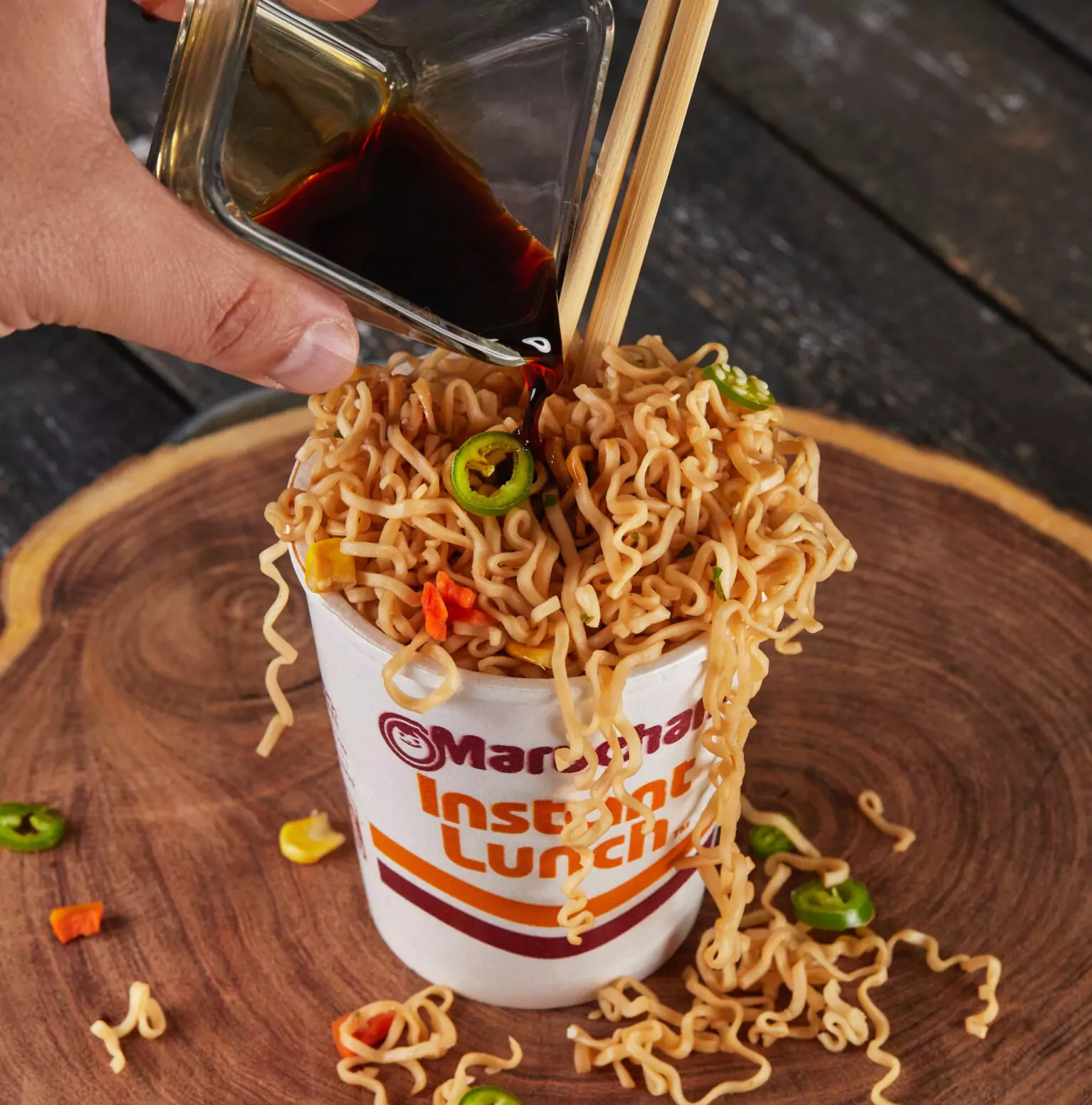Food Additives: A Guide to Understanding Their Impact on Your Health

Key Takeways
From soft drinks to candies and cereal to salad dressings, many food products contain food additives. They’re often necessary to prevent food from going rancid and sometimes work as flavor enhancers.
While regulators like the Food and Drug Administration typically have a list of safe additives and ideal quantities for consumption, many food additives come with risks for your health. Some can increase your cholesterol and heart disease risk, while others can be carcinogens.
The best way to tell what’s in your food is to read food labels, but you may not understand enough about their ingredients. There’s so much nuance regarding food additives; there are so many different types, from emulsifiers to sweeteners, and they’re not all created equal. Here’s a little more about some of the most common ones and four that are actually banned outside of the U.S.!
What is a Food Additive?

A food additive is anything added to food during its production, processing, treatment, packaging, transportation, or storage. Additives are in your food for many reasons, and not all of them are bad.
They can be in your food to maintain freshness or improve its nutritional value, taste, texture, or appearance. Here are eight common food additives and a little information about how each one can affect your health.
1) Artificial Food Coloring
Artificial food coloring, or color additives, are dyes and pigments that change the appearance and color of a product. Artificial food coloring has a long history in the United States, with the first synthetic organic dye being discovered in 1856.
Today, the FDA approves hundreds of synthetic and natural color additives for use in cosmetics, drugs, and food. In fact, the synthetic colors Red 40, Yellow 5, and Yellow 6 account for 90 percent of the color additives in food.
There are many concerns about the safety of color additives. Some studies suggest that certain artificial coloring can contribute to hyperactivity in children. Another study found that Yellow 5 could be associated with trouble sleeping and increased irritability in children, but further study is needed.
A common concern is that artificial food coloring causes cancer. A study has found that the color additive FD&C Red Dye No.3 may contribute to the development of thyroid tumors in rats. However, since most research is based on animal studies, further investigation is necessary since there is still little evidence that artificial food coloring causes cancer in humans.
Even so, because artificial food colorings are found primarily in processed foods, this may be an additive that you wish to avoid if pursuing a healthy diet rich in whole, natural foods.
2) Aspartame

Aspartame is a low-calorie sweetener—you’d typically identify it as the blue packet if that’s how you pick your sweeteners! Approved by the FDA in the 1980s, aspartame is used as a tabletop sweetener and sweetens gum, breakfast cereal, beverages like soft drinks, dairy products, and syrups.
It’s not generally found in baked goods because it loses its sweetness once heated. Studies show that aspartame has little effect on glucose, making it a good sugar substitute for those with diabetes. Though there have been several studies about aspartame’s connection to cancer, no evidence has definitively linked aspartame to an increased risk of cancer.
However, some studies have suggested that aspartame has the potential to cause headaches. If you experience headaches or other adverse side effects after consuming aspartame, it may be a good idea to avoid it.
3) Carrageenan
Carrageenan is a thickener and stabilizer extracted from red seaweed. It's present in many products, including chocolate milk, deli meat, pre-cooked poultry, canned pet food, and toothpaste. It is also used as a dairy replacement in vegan milk and a substitute for gelatin in vegan foods.
Carrageenan has been associated with gastrointestinal problems. One study found connections between exposure to carrageenan and gastrointestinal ulcers, and another found potential for carrageenan to cause colonic inflammation. More research is needed, but limiting carrageenan in your diet may be a good idea.
4) Guar Gum
Guar gum is a powder derived from the endosperm of the seeds of a plant called the cluster bean. The endosperm is the tissue surrounding the embryo in flowering plants' seeds.
Guar gum is a thickener and stabilizer in various products, including baking products, breakfast cereal, jams, dairy products, and sauces. Guar gum is high in soluble fiber. Because of this, studies have shown that it has potential benefits for digestion.
One study suggests that it has the potential as a prebiotic source, which benefits the probiotics in your gut. Other studies have found that guar gum has the potential to improve the symptoms of chronic constipation and irritable bowel syndrome.
5) High-Fructose Corn Syrup

High-fructose corn syrup is a common sweetener that is derived from corn. It is made by adding enzymes to corn syrup, which is 100 percent glucose. The enzymes convert some of this glucose into fructose. High-fructose corn syrup is found in numerous products in the United States, including soda, juice, breakfast cereal, pancake syrup, fruit preserves and jams, and candy.
The consumption of high-fructose corn syrup adds a large amount of fructose to your diet, which is associated with numerous health risks, including type 2 diabetes and insulin resistance, obesity, and an increased risk of developing gout and kidney stones in men. High fructose intake can also put a lot of pressure on your liver.
6) Sodium Nitrite
Sodium Nitrite is a preservative used to cure meat like ham, bacon, jerky, and hot dogs. Sodium nitrite helps prevent the growth of harmful bacteria and is responsible for the red color of these cured meats.
Several studies have suggested that consumption of sodium nitrite in red and processed meat could be linked to cancer. This connection is caused by nitrites being converted into N-nitroso compounds, which can happen during the digestion of proteins.
It's why nitrites found in processed meats are potentially harmful, but those found naturally occurring in vegetables are not. Avoiding processed meats rich in nitrites and focusing instead on lean and unprocessed meats, like poultry and vegetables, could lead to better overall health in the long run.
7) Monosodium Glutamate (MSG)

Monosodium Glutamate, or MSG, is a food additive that boosts the umami, or savoriness, of a dish. MSG is the sodium salt of glutamic acid, an amino acid naturally occurring in our bodies and in several foods.
The synthetic version is made by fermenting starch, sugar, or molasses in a process similar to making yogurt or wine. The safety of MSG has been the subject of much debate since the 1960s when people began complaining about experiencing negative reactions to the MSG used in Chinese food.
But is it good for you? The safety of MSG has been the subject of much scientific study, and much of it is contradictory or inconclusive. One study suggested that daily MSG consumption may raise blood pressure in certain cases, but more research is still needed to confirm the findings.
However, like many foods, sensitivity to MSG could be possible on an individual basis, but there is little evidence that it is harmful to humans as a whole. One study has even found that MSG might contribute to a decreased risk of hyperglycemia. However, there have been studies that suggest MSG sensitivity is a valid concern. If you believe you are sensitive to MSG, it may be a good idea to limit it in your diet.
8) Xanthan Gum
Xanthan gum is a polysaccharide produced from the fermentation of sugar with Xanthomonas campestris, a type of bacteria. It acts as a thickener and is found in many products, including baked goods, pet food, beverages, and gluten-free bread.
Studies have shown that xanthan gum has the potential to lower blood sugar in people with diabetes, as well as increase feelings of fullness. However, these effects were reached when subjects consumed large amounts of xanthan gum, which could adversely affect digestion. It’s safe to stick to FDA-approved quantities of xanthan gum unless directed by a doctor.
4 Food Additives That Are Banned Outside of the U.S.

1) Brominated Vegetable Oil
Brominated vegetable oil (BVO) is an additive used in soda that prevents the flavor from separating from the soda. Bromine, an ingredient in BVO, can irritate the skin and mucous membranes and has long-term effects like headache, memory loss, and nerve problems. Studies have also shown that bromine can build up in the body over time. It is banned in Japan, India, and the European Union.
2) Potassium Bromate
Potassium Bromate is an additive that helps bread rise, and it is still legal in the United States, even though it’s been shown to cause cancer in rats and is considered a potential carcinogen to humans. China, Brazil, the U.K., and India have all banned it.
3) Ractopamine
Ractopamine is a drug added to animal feed to increase weight gain and feed efficiency in livestock. Studies have shown that it has negative effects on the behavior and wellbeing of livestock, increasing agitation and stress. Ractopamine is banned in many countries, including China, Taiwan, Russia, and the European Union, but is still legal in the United States.
4) rbST
Recombinant bovine somatotropin, or rbST, is the synthetic version of bovine somatotropin or growth hormone. It increases milk production in dairy cows. Although the evidence that rbST causes health problems in humans is inconclusive, it has been shown to cause several health problems in cows.
The rbST hormone can cause leg and hoof problems, udder infections, infertility, congenital disabilities, etc. Because of this, rbST is banned in the European Union and Canada.
Find the right Nutrisense programto turn insight into progress.
Go Beyond Glucose Data with Nutrisense
Your glucose can significantly impact how your body feels and functions. That’s why stable levels are an important factor in supporting overall wellbeing. But viewing glucose isn't enough. Nutrisense, you’ll be able to learn how to use your body's data to make informed lifestyle choices that support healthy living.
One-to-one coaching
Sign up to access insurance-covered video calls to work with a glucose expert: a personal registered dietitian or certified nutritionist who will help tailor your lifestyle and diet to your goals.
Monitor and measure what matters
With the Nutrisense CGM Program, you can monitor your glucose with health tech like glucose biosensors and continuous glucose monitor (CGM)s, and analyze the trends over time with the Nutrisense App. This will help you make the most informed choices about the foods you consume and their impact on your health.
Find your best fit
Ready to take the first step? Start with our quiz to find the right Nutrisense program to help you take control.

Amanda is a Nutrition Manager and Registered Dietitian, with a Masters in Dietetics from Stephen F. Austin State University. Originally from south GA, she got her undergrad degree from Texas Tech University. She worked at a hospital in Fort Worth, TX, for 4 years as a dietitian, counseling those living with HIV.




